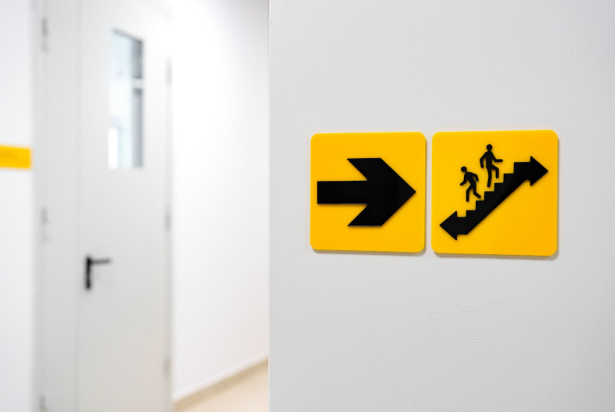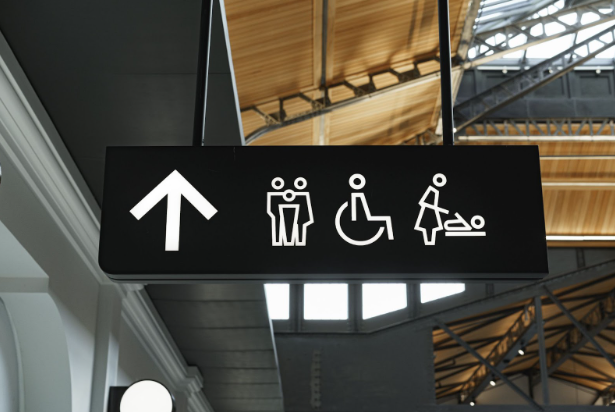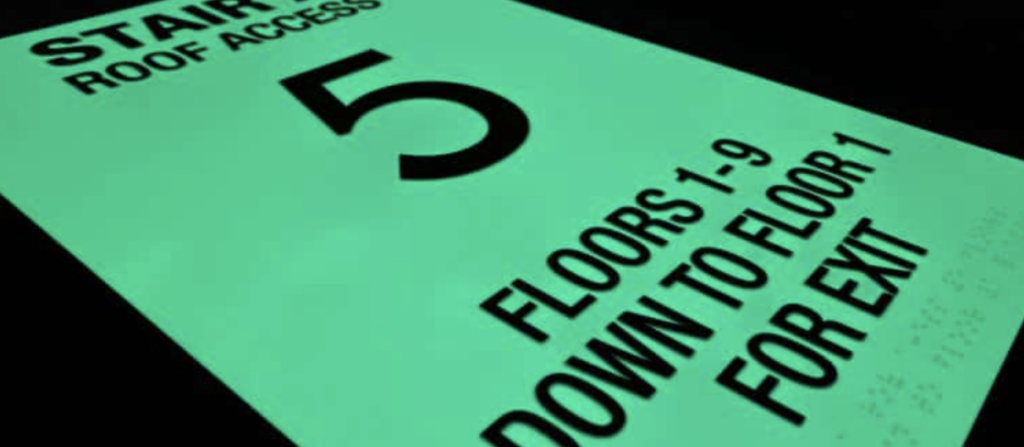Navigating through buildings can be challenging, especially in large or complex spaces like hospitals, universities, or corporate offices. ADA-compliant signage plays a critical role in enhancing building wayfinding, ensuring that everyone, regardless of ability, can move through environments confidently and independently. Let’s explore how ADA signage transforms wayfinding into an inclusive and effective system.
The Role of ADA Signage in Building Wayfinding
ADA signage is more than just a legal requirement—it’s a tool for creating accessible and user-friendly environments. By adhering to the Americans with Disabilities Act (ADA), businesses ensure their spaces are navigable for all individuals, including those with visual, auditory, or physical impairments.
Key features of ADA-compliant signage include:
- Tactile Elements: Raised characters and braille allow visually impaired individuals to read signs through touch.
- High Contrast and Legibility: Clear text and contrasting colors improve readability for those with low vision.
- Consistent Placement: Signs are installed at standardized heights and locations to ensure they are easily found and used.
These elements collectively enhance the building wayfinding experience by making navigation intuitive and inclusive.
How ADA Signage Improves Navigation
1. Promotes Independence
ADA signage empowers individuals with disabilities to navigate spaces without assistance. Tactile signs with braille allow visually impaired users to identify rooms or directions independently, fostering autonomy and confidence.
2. Simplifies Complex Spaces
In large buildings such as airports or hospitals, clear wayfinding systems reduce confusion. Features like directional arrows, floor maps, and color-coded paths guide visitors seamlessly from one point to another.
3. Supports Multisensory Accessibility
Modern ADA signage integrates auditory cues, interactive digital displays, and mobile apps with GPS functionality. These technologies cater to diverse needs, ensuring that both static and dynamic wayfinding systems are accessible.
The Business Case for ADA-Compliant Wayfinding
Beyond accessibility, ADA-compliant wayfinding offers significant advantages for businesses:
- Enhanced User Experience: Clear navigation improves visitor satisfaction, creating positive first impressions.
- Legal Compliance: Meeting ADA standards minimizes the risk of fines or lawsuits related to non-compliance.
- Increased Inclusivity: Accessible spaces attract a broader audience, including individuals with disabilities and their families.
- Brand Reputation: Companies that prioritize inclusivity demonstrate corporate responsibility and gain public trust.
Innovations in Building Wayfinding
Technological advancements have revolutionized ADA signage. Here are some innovative solutions to enhance accessibility:
- Digital Kiosks: Touchscreen directories with audio guidance provide real-time navigation assistance.
- Beacon Technology: Bluetooth-enabled devices transmit location-based information to smartphones, guiding users through complex spaces.
- Dynamic Displays: Digital signs can adapt text size, language, or content based on user needs.
These innovations not only comply with ADA guidelines but also future-proof buildings by accommodating evolving accessibility standards.
Universal Design Principles in Wayfinding
Universal design emphasizes creating environments that are inherently accessible to all people. By applying these principles to building wayfinding, businesses can achieve:
- Equitable Use: Signage that serves everyone equally without requiring adaptation.
- Flexibility: Systems that cater to diverse abilities and preferences.
- Intuitive Design: Clear symbols and language reduce cognitive load for users.
When universal design is integrated into ADA signage, it results in spaces that are not only compliant but also welcoming and inclusive.
ADA Signage: The Foundation of Inclusive Building Wayfinding
ADA-compliant signage is a cornerstone of effective building wayfinding. By incorporating tactile elements, clear visuals, and innovative technologies, businesses can create environments that are accessible to all. These systems not only fulfill legal obligations but also enhance user experience, improve safety, and reflect a commitment to inclusivity.
As organizations continue to prioritize accessibility in their spaces, they contribute to a more equitable society where everyone can navigate with ease and confidence. For businesses looking to implement or upgrade their wayfinding systems, embracing ADA standards is not just a necessity—it’s an opportunity to lead in inclusivity and innovation.

Elevate Building Wayfinding with ADA-compliant Signage
Partner with Nova Polymers, the industry leader in photopolymer solutions. Explore our cutting-edge materials, expert training, and durable designs to create accessible environments for all.




